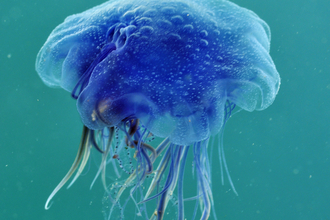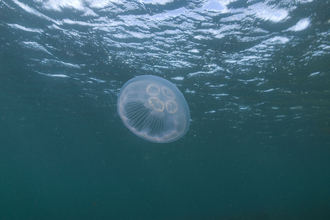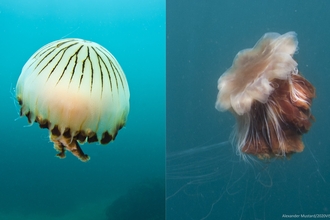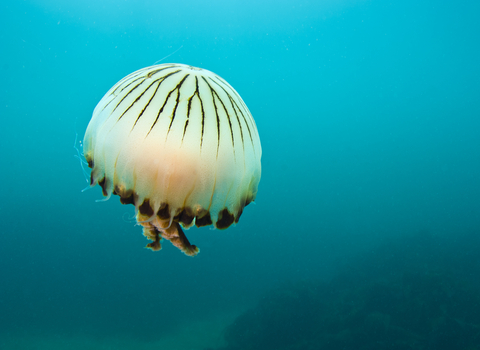
Compass jellyfish ©Alex Mustard/2020VISION
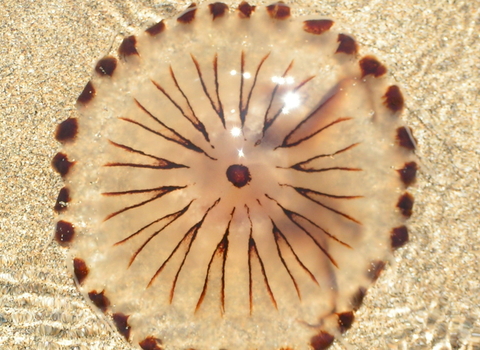
Richard Burkmar
Compass jellyfish
It's easy to see where the compass jellyfish got its name – its brown markings look just like a compass! They may look beautiful – but they give a nasty sting so keep your distance.
Scientific name
Chrysaora hysoscellaWhen to see
May to OctoberSpecies information
About
With brown marking reminiscent of a compass, this jellyfish is really quite distinctive. A summer visitor to our shores, the compass jellyfish feeds on small fish, crabs and even other jellyfish. They give a nasty sting, so if you spot them during a visit to the beach – look, but don’t touch! Once they have stung something, jellyfish often leave the tentacle behind and can continue to sting using it even when not connected to their body.How to identify
A translucent yellowish-white jellyfish with brown markings around the fringe and on the top of the bell. Those atop the bell resemble a compass, with V shapes radiating out from a central point. They have a bunch of frilled oral arms below the bell and long thin marginal tentacles around the fringe of the bell.Don't get too close to those tentacles though, they give a nasty sting.

